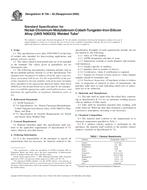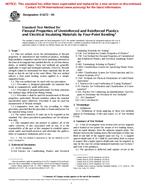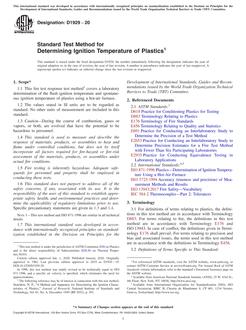1.1 This standard covers procedures for obtaining laboratory data concerning the toxicity of test material (for example, sediment or hydric soil (that is, a soil that is saturated, flooded, or ponded long enough during the growing season to develop anaerobic (oxygen-lacking) conditions that favor the growth and regeneration of hydrophytic vegetation)) to amphibians. This test procedure uses larvae of the northern leopard frog (Rana pipiens). Other anuran species (for example, the green frog (Rana clamitans), the wood frog (Rana sylvatica), the American toad (Bufo americanus)) may be used if sufficient data on handling, feeding, and sensitivity are available. Test material may be sediments or hydric soil collected from the field or spiked with compounds in the laboratory.
1.2 The test procedure describes a 10-d whole sediment toxicity test with an assessment of mortality and selected sublethal endpoints (that is, body width, body length). The toxicity tests are conducted in 300 to 500-mL chambers containing 100 mL of sediment and 175 mL of overlying water. Overlying water is renewed daily and larval amphibians are fed during the toxicity test once they reach Gosner stage 25 (operculum closure over gills). The test procedure is designed to assess freshwater sediments, however, R. pipiens can tolerate mildly saline water (not exceeding about 2500 mg Cl–/L, equivalent to a salinity of about 4.1 when Na+ is the cation) in 10-d tests, although such tests should always include a concurrent freshwater control. Alternative test durations and sublethal endpoints may be considered based on site-specific needs. Statistical evaluations are conducted to determine whether test materials are significantly more toxic than the laboratory control sediment or a field-collected reference sample(s).
1.3 Where appropriate, this standard has been designed to be consistent with previously developed methods for assessing sediment toxicity to invertebrates (for example, Hyalella azteca and Chironomus dilutus toxicity tests) described in the United States Environmental Protection Agency (USEPA, (1)) freshwater sediment testing guidance, Test Methods E 1367 and E 1706, and Guides E 1391, E 1525, E 1611, and E 1688. Tests extending to 10 d or beyond, and including sublethal measurements such as growth, are considered more effective in identifying chronic toxicity and thus delineating areas of moderate contamination (1-3).
1.4 Many historical amphibian studies, both water and sediment exposure, have used tests of shorter duration (5 days or less) (for example, 4-7) and, although both survival and sublethal endpoints were often assessed, there is substantive evidence that tests of longer duration are likely to be more sensitive to some contaminants (8, 9). Research performed to develop and validate this test protocol included long-term (through metamorphosis) investigations and other researchers have also conducted long-duration tests with anurans (7-11). In the development of these procedures, an attempt was made to balance the needs of a practical assessment with the importance of assessing longer-term effects so that the results will demonstrate the needed accuracy and precision. The most recent sediment toxicity testing protocols for invertebrates have encompassed longer duration studies which allow the measurement of reproductive endpoints (1, 12). Such tests, because of increased sensitivity of the sublethal endpoints, may also be helpful in evaluating toxicity. Full life-cycle studies with anurans (including reproduction) are usually not feasible from either a technical or monetary standpoint. However, if site-specific information indicates that the contaminants present are likely to affect other endpoints (including teratogenicity), then the duration of the toxicity test may be increased through metamorphosis or additional sublethal endpoints may be measured (for example, impaired behavior, deformities, time-to-metamorphosis). The possible inclusion of these endpoints and extension of test length should be considered during development of the project or study plan (see 8.1.1).
1.5 The methodology presented in this standard was developed under a Department of Defense (DoD) research program and presented in a guidance manual for risk assessment staff and state/federal regulators involved in the review and approval of risk assessment work plans and reports (13). To develop this method, a number of tests with spiked sediment tests were conducted (13, 14). Since development of the methodology it has been used operationally to evaluate field-collected sediments from several state and federal environmental sites (15, 16). For most of these studies the preferred test organisms, Rana pipiens, was used. At a lead-contaminated state-led site, operated by the Massachusetts Highway Department, Xenopus laevis (African clawed frog) was used in the sediment test system because of availability problems with Rana pipiens (17), The test method was also used to evaluate sediment toxicity at a cadmium-contaminated USEPA Region 4-led site in Tennessee (18). The methodology was used to help characterize potential effects of contaminants on amphibians and to help develop preliminary remedial goals, if warranted. All tests evaluated survival and growth effects after 10 d of exposure in accordance with the methods presented in this standard.
1.6 The use of larval amphibians to assess environmental toxicity is not novel. Researchers have used tadpoles to examine toxicity of metals and organic compounds. Most of these studies have been through water exposure, usually in a manner similar to fish or invertebrate exposure as described in Guide E 729 (19-29). Fewer studies have focused on exposure of anuran larvae to sediments, and the methods employed vary widely, from in situ enclosures (30) to laboratory tests using variable exposure conditions and organism ages (4, 8, 31-33). No studies were identified that used the same test conditions as described in this standard. However, several laboratory-based evaluations of sediment effects on amphibians are described in the following subsections.
1.6.1 Sediment toxicity tests conducted in the laboratory with amphibians were performed over a range of test durations from 4 d (4, 31, Guide E 1439-98 Appendix X2) to 12 d (33) and through metamorphosis (8, 32). Sediment toxicity tests with anurans native to North America were started with larval tadpoles between Gosner stages 23 and 25 (8, 32, 33). Test temperatures were between 21 and 23°C and feeding began after tadpoles reached Gosner stage 25. Food sources were Tetramin™ (8), boiled romaine lettuce (32), or boiled romaine lettuce and dissipated rabbit food pellets (33). Tests were conducted in static renewal mode with water replacements conducted at varying rates (daily (31, 33), weekly (8), every 3 to 5 d (32)). Test design (number of replicates, test vessel size, number of organisms per replicate) varied depending on the objective of the study with several tests conducted in aquaria (32), large bins (8), or swimming pools (33). Endpoints evaluated at test termination included survival (4, 8, 31-33), growth (8, 31-33), bioaccumulation of metals (8), developmental rates (8, 32), deformities (31, 32), swimming speed (33) and foraging activity levels (32).
1.6.2 To assess the effect of direct contact with the sediments containing PCBs, Savage et al. (32) exposed larval tadpoles (Gosner stage 23 to 25; wood frogs (R. sylvatica)) to field-collected sediments under conditions that allowed both direct contact with the sediment and separation from the sediment with a 500 μm mesh barrier. The study found that lethal and sublethal effects on tadpoles observed through metamorphosis were more pronounced when direct contact with the sediment was allowed. The test conditions described in this standard allow tadpoles to maintain direct contact with the sediment.
1.6.3 Sediment toxicity testing with Xenopus laevis has focused on evaluating the developmental effects of sediment extracts, as opposed to whole sediments, on frog embryos. Methods have been developed which expose blastula stage embryos to sediment by enclosing the embryos in a Teflon mesh insert that rests over the top of the sediment in the sediment–water interface region (31, Guide E 1439-98 Appendix X2). These studies are conducted evaluate survival, growth, and physical malformations of the embryos after a 4-d exposure period. The test conditions described in this standard allow more direct contact with the sediment, using older test organisms, and a longer exposure duration.
1.7 Sediment toxicity tests are an effective means for evaluating the impact of sediment contamination on amphibians in a multiple lines of evidence paradigm. The evaluation is most powerful when toxicity testing sampling stations are co-located with sediment analytical chemistry samples and ecological surveys, allowing for a detailed evaluation of the co-occurring data in the ecological risk assessment. The spatial and temporal co-location of toxicity testing and analytical samples is particularly important for establishing contaminant-specific effects and assessing contaminant bioavailability.
1.8 In order for a sediment toxicity test to be sensitive it must be of sufficient duration to measure potential toxicity and it must be conducted during the appropriate developmental stage of the test organism's life cycle. Using recently hatched tadpoles and conducting the sediment exposure test for 10 d to allow the evaluation of growth endpoints meets both of these sensitivity requirements.
1.9 This standard does not purport to address all of the safety concerns, if any, associated with its use. It is the responsibility of the user of this standard to establish appropriate safety and health practices and determine the applicability of regulatory limitations prior to use.
Product Details
- Published:
- 11/15/2007
- Number of Pages:
- 18
- File Size:
- 1 file , 210 KB


